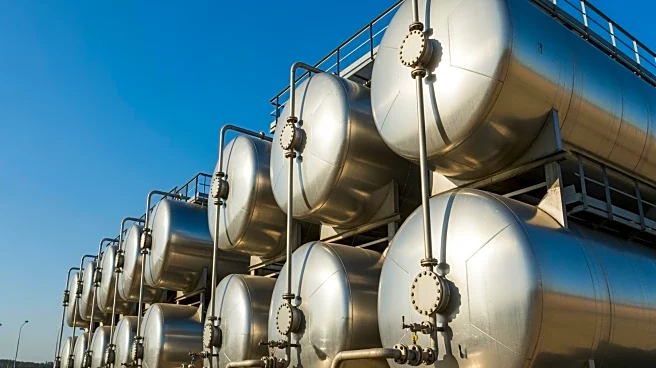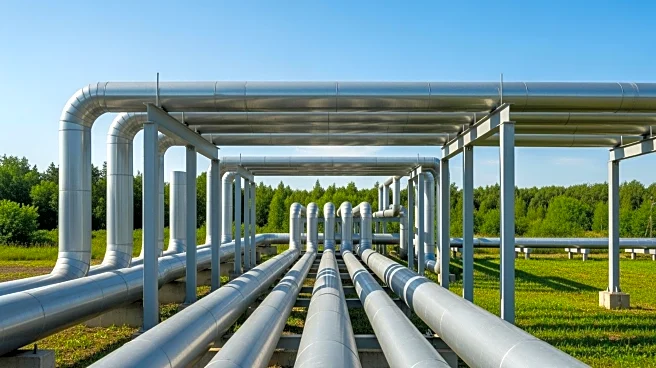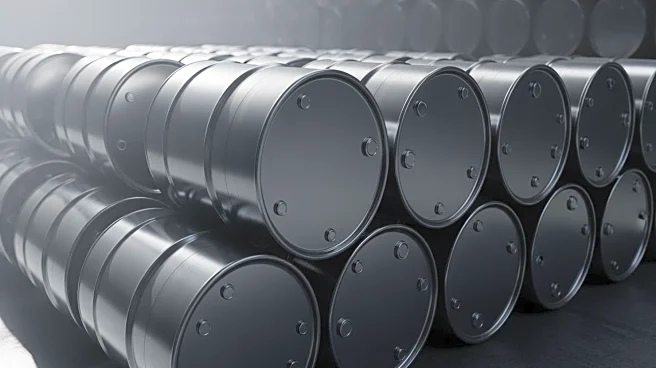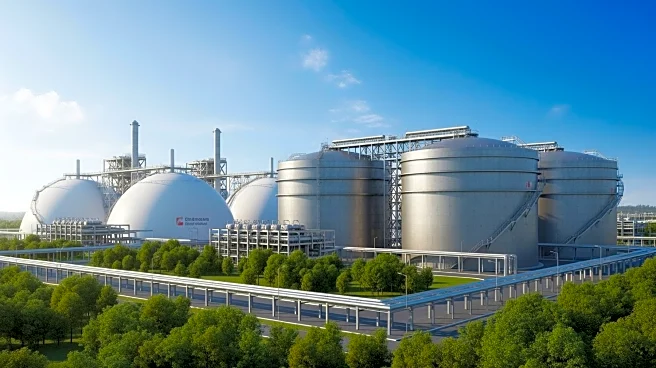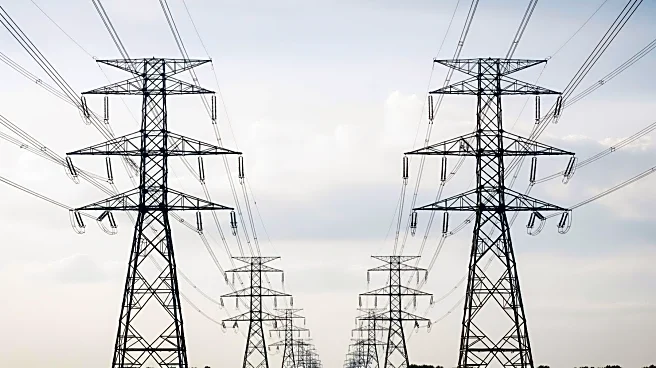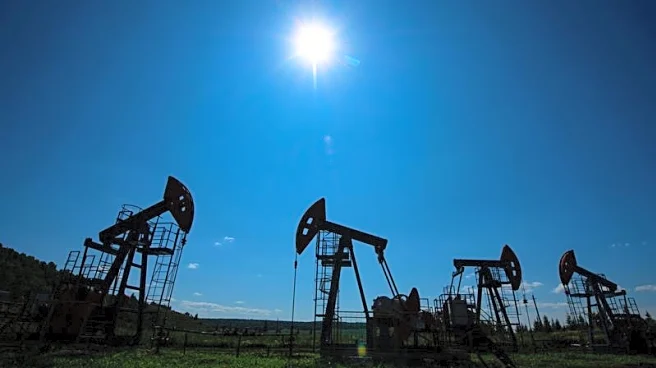What's Happening?
The Energy Information Administration (EIA) has released its latest report on U.S. natural gas inventories, indicating a net increase of 80 billion cubic feet (Bcf) as of October 10, 2025. The total working
gas in storage now stands at 3,721 Bcf, which is 26 Bcf higher than the same period last year and 154 Bcf above the five-year average of 3,567 Bcf. This increase is distributed across various regions, with the East, Midwest, Mountain, Pacific, and South Central regions all showing positive changes. Notably, the Midwest region remains below the five-year average despite the overall increase. The report highlights that all regions, except the Midwest, are above their respective five-year averages, indicating a robust storage situation as the country heads into the colder months.
Why It's Important?
The increase in natural gas storage is significant as it suggests a stable supply heading into the winter season, which is crucial for heating demands across the U.S. This surplus could potentially lead to lower natural gas prices, benefiting consumers and industries reliant on natural gas for energy. Additionally, the higher storage levels may provide a buffer against potential supply disruptions or increased demand spikes during colder weather. For the energy sector, this development could influence market dynamics, including pricing strategies and future production plans. The data also serves as an indicator of the effectiveness of current energy policies and infrastructure in managing and storing natural gas efficiently.
What's Next?
As the U.S. approaches the winter season, the focus will likely shift to monitoring weather patterns and their impact on natural gas demand. Energy companies may adjust their production and distribution strategies based on these storage levels and anticipated consumption rates. Policymakers might also consider these figures when planning for energy security and addressing potential shortages. Furthermore, the EIA will continue to release weekly updates, providing insights into how storage levels evolve and how they might affect market conditions. Stakeholders in the energy sector will be closely watching these reports to make informed decisions.
Beyond the Headlines
The increase in natural gas storage could have broader implications for U.S. energy policy, particularly in the context of transitioning to renewable energy sources. While natural gas is considered a cleaner alternative to coal, its role in the energy mix may be reassessed as the country aims to reduce carbon emissions. The current storage levels might also influence discussions on energy independence and the strategic importance of maintaining robust domestic energy reserves. Additionally, the data could impact international energy markets, as U.S. natural gas exports play a significant role in global supply chains.
